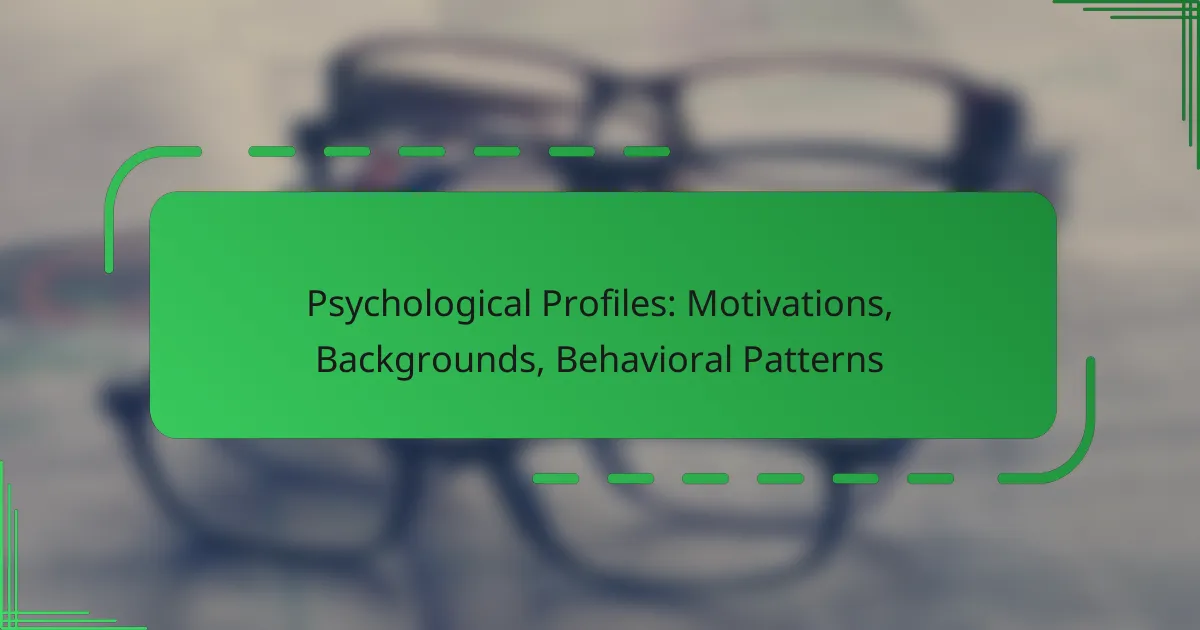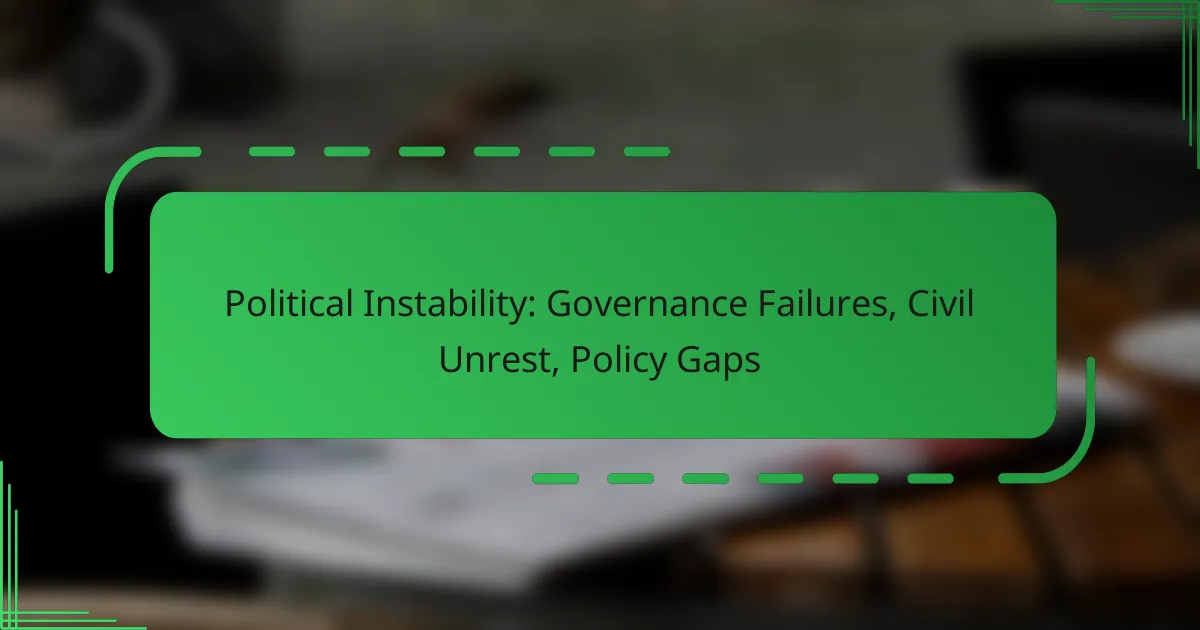Social media platforms play a crucial role in addressing issues of radicalization and misinformation while fostering community engagement. By implementing targeted strategies such as community moderation and fact-checking initiatives, these platforms can promote positive interactions and empower users to discern credible information. Enhancing user trust and connection within communities further encourages the sharing of reliable content, ultimately contributing to a healthier online environment.
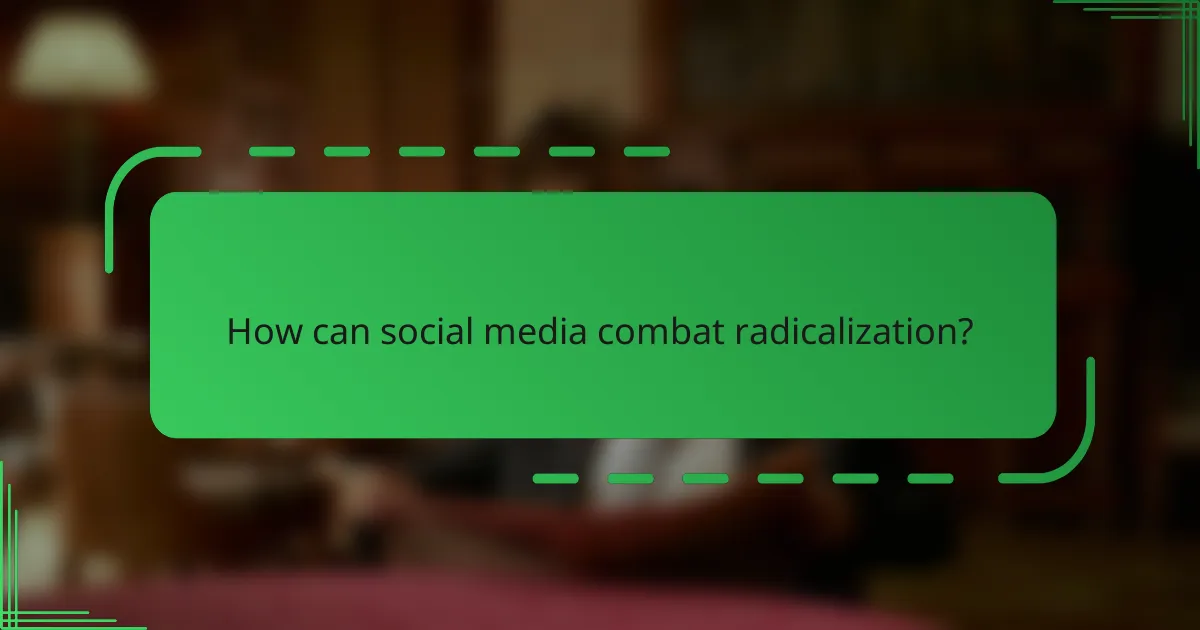
How can social media combat radicalization?
Social media can combat radicalization by implementing targeted strategies that promote positive engagement and counter harmful narratives. Effective measures include community moderation, partnerships with non-governmental organizations (NGOs), and algorithm adjustments to prioritize constructive content.
Community moderation strategies
Community moderation strategies involve empowering users to actively participate in monitoring and reporting harmful content. This can include training moderators to identify signs of radicalization and providing clear guidelines on acceptable behavior.
Platforms can also implement user-driven reporting systems that allow community members to flag suspicious content. Encouraging peer-to-peer support and fostering a culture of accountability can significantly reduce the spread of extremist views.
Partnerships with NGOs
Forming partnerships with NGOs can enhance social media’s ability to combat radicalization by leveraging their expertise in community outreach and education. NGOs often have established networks and resources that can help create awareness and promote counter-narratives.
Collaborative initiatives might include workshops, online campaigns, and educational resources aimed at vulnerable populations. These partnerships can also facilitate access to mental health support for individuals at risk of radicalization.
Algorithm adjustments
Adjusting algorithms to prioritize content that fosters positive engagement is crucial in combating radicalization. Social media platforms can implement changes that reduce the visibility of extremist content while promoting diverse viewpoints and constructive discussions.
For instance, algorithms can be fine-tuned to recognize and downrank posts that exhibit signs of hate speech or misinformation. Regular audits and user feedback can help ensure these adjustments remain effective and aligned with community standards.
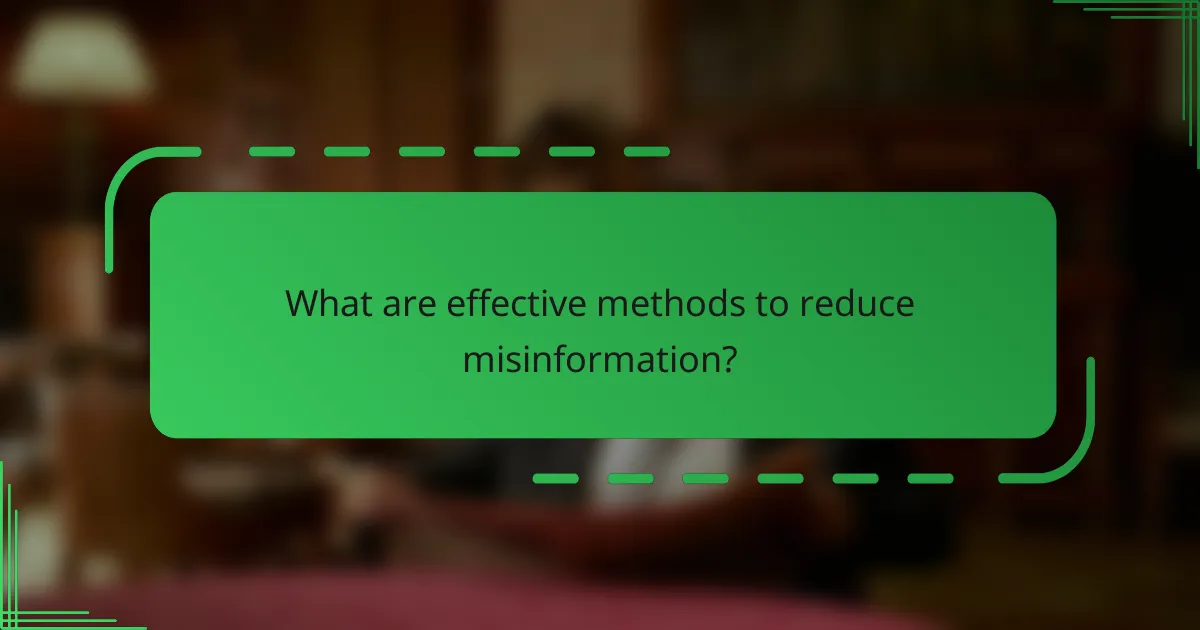
What are effective methods to reduce misinformation?
Effective methods to reduce misinformation include implementing fact-checking initiatives, user education programs, and content labeling systems. These strategies help to verify information, empower users with critical thinking skills, and clearly indicate the credibility of content.
Fact-checking initiatives
Fact-checking initiatives involve organizations or platforms that verify the accuracy of claims made in news articles, social media posts, and other forms of communication. By providing reliable information, these initiatives can significantly reduce the spread of false narratives.
Examples include partnerships between social media platforms and independent fact-checkers, which often flag misleading content and provide users with accurate context. Users should look for verified sources and check for fact-checking labels when consuming information online.
User education programs
User education programs aim to enhance media literacy among the public, teaching individuals how to critically assess the information they encounter. These programs can take the form of workshops, online courses, or interactive campaigns that focus on identifying credible sources and recognizing misinformation.
For instance, schools and community organizations can implement curricula that emphasize critical thinking and digital literacy skills. Engaging users in discussions about the impact of misinformation can also foster a more informed community.
Content labeling systems
Content labeling systems provide users with clear indicators of the reliability of information. These labels can include tags such as “fact-checked,” “opinion,” or “satire,” helping users quickly gauge the nature of the content they are viewing.
Platforms can adopt standardized labeling practices to ensure consistency across various types of content. Users should familiarize themselves with these labels and consider them when evaluating the trustworthiness of information.

How does community engagement influence social media behavior?
Community engagement significantly shapes social media behavior by fostering trust and enhancing the quality of content shared. When users feel connected to a community, they are more likely to participate actively and share reliable information.
Increased user trust
Engaging with a community builds trust among users, which is essential for healthy social media interactions. When individuals see consistent, positive engagement from peers, they are more likely to believe in the authenticity of the information shared.
For example, community-led initiatives that promote transparency and accountability can lead to higher user confidence. This trust can reduce the spread of misinformation, as users are more inclined to verify facts before sharing content.
Enhanced content quality
Community engagement often leads to improved content quality, as users contribute diverse perspectives and expertise. When members actively participate in discussions, they can provide valuable insights, leading to more informative and well-rounded content.
Additionally, communities that prioritize quality over sensationalism tend to curate better information. Users can establish guidelines for acceptable content, which helps maintain a higher standard and reduces the prevalence of misleading posts.
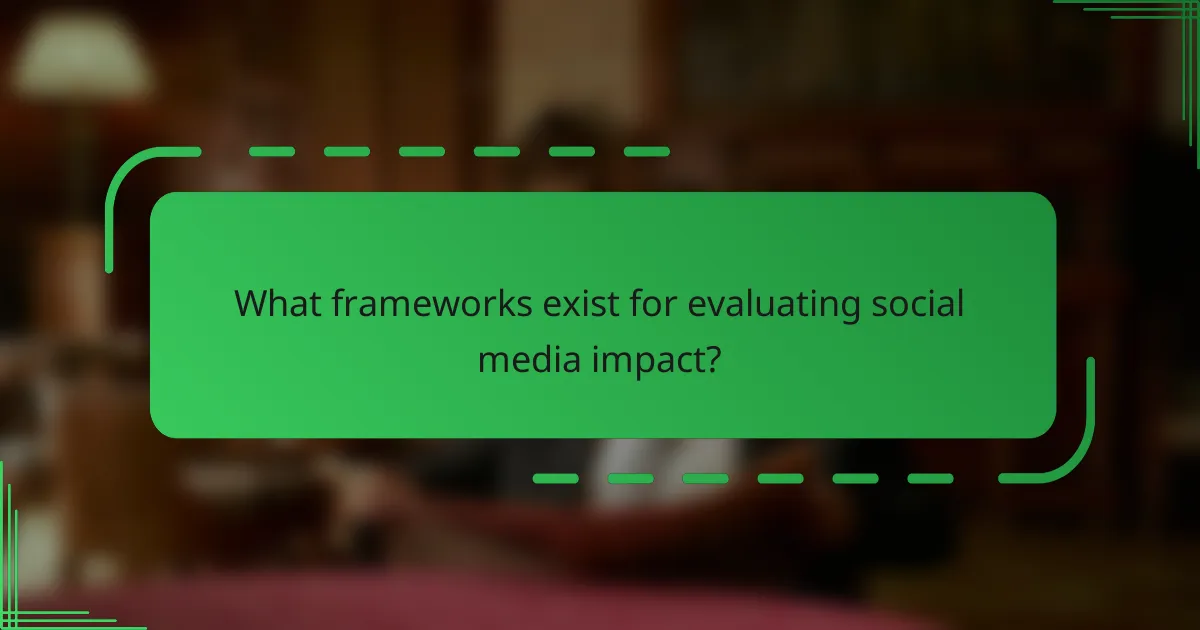
What frameworks exist for evaluating social media impact?
Several frameworks can be utilized to assess the impact of social media, focusing on engagement, sentiment, and overall effectiveness. These frameworks help organizations understand how their social media activities influence audience behavior and perceptions.
Engagement metrics
Engagement metrics are quantitative measures that indicate how users interact with social media content. Common metrics include likes, shares, comments, and click-through rates. Tracking these metrics can reveal which types of content resonate most with audiences and drive further interaction.
To effectively evaluate engagement, consider setting benchmarks based on industry standards or historical data. For example, a post with a 5% engagement rate may be considered successful in many sectors. Regularly analyzing these metrics can help refine content strategies and improve audience connection.
Sentiment analysis tools
Sentiment analysis tools assess the emotional tone behind social media conversations, categorizing them as positive, negative, or neutral. These tools utilize natural language processing to analyze user-generated content and gauge public opinion on various topics or brands.
When implementing sentiment analysis, choose tools that offer real-time monitoring and can handle multiple languages if your audience is diverse. For instance, platforms like Brandwatch or Hootsuite Insights can provide valuable insights into how your brand is perceived, allowing for timely adjustments to messaging or strategy.

How do different regions approach social media regulation?
Different regions implement varied approaches to social media regulation, often reflecting cultural values and political priorities. The European Union focuses on comprehensive legislation, while the United States emphasizes free speech protections, leading to ongoing debates about accountability and moderation.
EU’s Digital Services Act
The EU’s Digital Services Act (DSA) aims to create a safer online environment by holding platforms accountable for harmful content. It requires social media companies to take proactive measures against misinformation and hate speech, including transparency in their algorithms and content moderation practices.
Under the DSA, platforms must assess risks associated with their services, particularly regarding the spread of misinformation. Non-compliance can result in significant fines, potentially reaching up to 6% of a company’s global revenue, making adherence crucial for businesses operating in the EU.
US Section 230 debates
Section 230 of the Communications Decency Act provides broad immunity to social media platforms from liability for user-generated content. This legal framework has sparked debates about whether it enables the spread of misinformation and harmful content without accountability.
Critics argue that Section 230 allows platforms to avoid responsibility for moderating content effectively, while supporters claim it is essential for protecting free speech online. Ongoing discussions focus on potential reforms that could impose stricter guidelines on content moderation while balancing First Amendment rights.
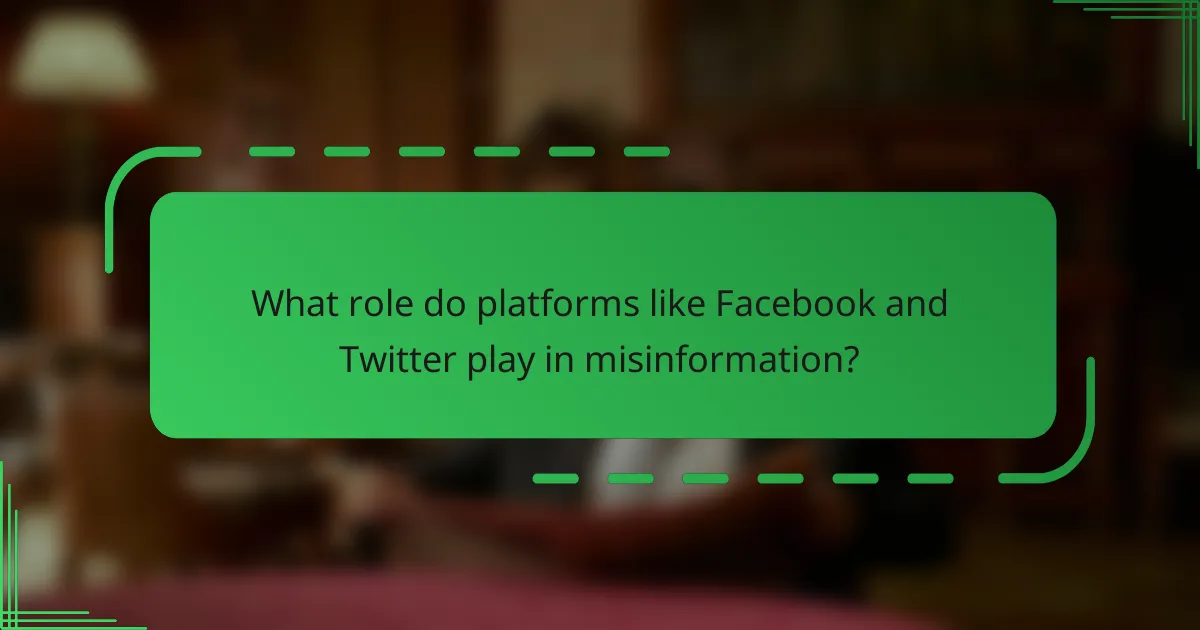
What role do platforms like Facebook and Twitter play in misinformation?
Platforms like Facebook and Twitter significantly contribute to the spread of misinformation by enabling rapid sharing and amplifying false narratives. Their algorithms often prioritize engagement over accuracy, leading to the viral spread of misleading content.
Content moderation policies
Content moderation policies on social media platforms are designed to identify and manage misinformation. These policies typically involve a combination of automated systems and human reviewers to flag or remove false content, although their effectiveness can vary widely.
For instance, Facebook employs fact-checkers to assess the accuracy of shared posts, while Twitter has implemented warning labels on tweets that contain disputed information. However, the enforcement of these policies can be inconsistent, leading to criticism from both users and advocacy groups.
Users can enhance their experience by familiarizing themselves with these moderation policies. Understanding what types of content are likely to be flagged can help users navigate platforms more effectively and avoid sharing potentially misleading information.

